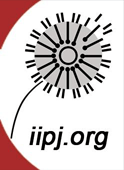The Cross-Fertilization of Human Rights Norms and Indigenous Peoples in Africa: From Endorois and Beyond
Abstract
Beginning in the 20th century, international law expanded beyond law between nations to eventually embrace the concept of human rights. However, until recently, human rights efforts were focused mostly on individuals, their rights and the obligations of the state in question. Indigenous peoples, on the other hand, have always articulated their collective rights and, to their credit, achieved notable success.
While there is no doubt that these achievements should be applauded, what is also of interest, and deserves further study, are the ways in which human rights jurisprudence concerning Indigenous peoples’ collective rights intermingle, cross-fertilize, and integrate. This dynamic relationship between the various sources of Indigenous rights law has had a tremendous impact locally, changing how states interact with the Indigenous peoples living within its borders.
The first aim of this article will be to explore the above-mentioned topics in detail with a particular eye on the African human rights systems. Secondly, it will examine how they relate to the Endorois case that was recently decided by the African Commission on Human and Peoples’ Rights. I conclude with an investigation into what this could mean for Indigenous peoples’ rights in the African context.
Acknowledgments
Derek Inman is a PhD researcher with the Faculty of Law and Criminology at the Vrije Universiteit Brussel. A version of this paper was presented at the Fourth Multidisciplinary Meeting on Indigenous Peoples in Madrid (Spain), 9 May 2013. This research has been funded by the Interuniversity Attraction Poles Programme initiated by the Belgian Science Policy Office, more specifically the IAP “The Global Challenge of Human Rights Integration: Towards a Users’ Perspective” (www.hrintegration.be).
Creative Commons License

This work is licensed under a Creative Commons Attribution-Noncommercial-No Derivative Works 4.0 License.
Recommended Citation
Inman, D. M.
(2014).
The Cross-Fertilization of Human Rights Norms and Indigenous Peoples in Africa: From Endorois and Beyond. The International Indigenous Policy Journal, 5(4)
. Retrieved from: https://ir.lib.uwo.ca/iipj/vol5/iss4/5
DOI: 10.18584/iipj.2014.5.4.5

